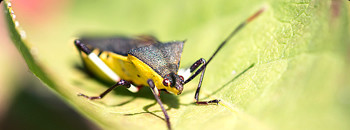As autumn approaches, many people are excited to spend time outdoors with family, friends, and pets, enjoying rays of sunshine and cool breezes. However, before you run outside, spend some time to get educated about the risks of tick-borne illnesses, especially Lyme disease. Residents of the Northeast should be on high-alert, due to high populations of deer that are prone to carry ticks with this potentially deadly disease.
The Northeast one of the most heavily tick-infested areas of the United States, along with mid-Atlantic and upper-Midwest, due to large presence of deer in close proximately to humans. Outdoor recreation is one of the easiest ways to come in contact with ticks, especially when camping and hiking and heavily wooded areas. Lyme disease is passed to humans through a bite from an infected deer tick, and cannot be passed any other way. During the past 15 years, according to the U.S. Centers for Disease Control and Prevention (CDC), the incidence of Lyme disease has tripled to almost 40,000 cases per year. That’s a lot of tick bites!
Dr. Harriet Kotsoris, a medical director at Time for Lyme, Inc. stresses the importance of early diagnosis and treatment to reduce the risk of spreading to other parts of the body. The good news is that acting fast in earlier stages leads to the disease being almost always readily cured.
If you are a resident of a state in the Northeast, you might be wondering how you can battle these tiny creatures this summer. Take the time to follow some of these simple steps from Medical News Today for the next time you head outdoors; it may make all the difference. To protect yourself from deer ticks:
- Wear light-colored clothing. This allows you to spot ticks more easily.
- Wear a hat and long-sleeved shirt. Tuck your clothes in, shirts into pants and pants into socks.
- Use an insect repellant on exposed skin.
- When hiking, stay in the middle of the trails, and try to avoid underbrush, fallen trees, and tall grass.
- Always perform a tick check when returning in from outdoors or when outdoors for extended periods of time.
Make sure to keep a close eye out for these sneaky little bugs. To learn more about Lyme disease and its treatments, visit the American Lyme Disease Foundation’s website.

